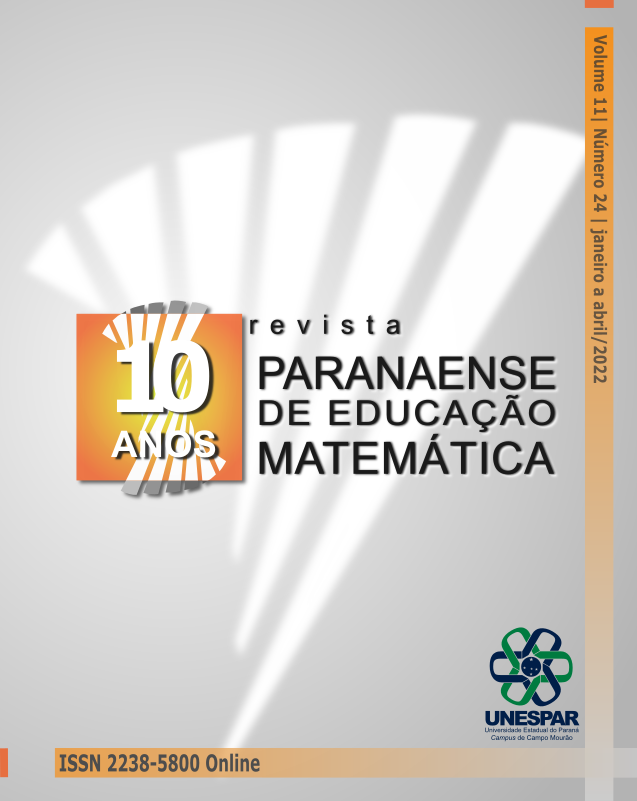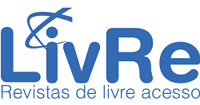O USO DO BARALHO GEOMÉTRICO PARA DESENVOLVER O CONTEÚDO DE PLANIFICAÇÃO DE FIGURAS ESPACIAIS
Abstract
In light of some experiences lived by the authors of this paper, it has been observed that several Middle School students struggle with visualizing geometric solids as well as assembling spatial figures based on their plane shapes. Thus, the authors have developed a card game called “Geometric Deck”, designed to enhance, in a playful and dynamic manner, the comprehension of how to build geometric solids based on their plane representation. The goal of this work is to report the experiences with the Geometric Deck card game in two workshops. One for teachers who are taking the Extension Course in Mathematics Teaching, in Seropédica - RJ and another for Middle School students, in the same city as above, during the National Science and Technology Week 2019. First, a workshop was held with seven Middle School Mathematics teachers, who had the opportunity to test the game and evaluate it orally and through a survey. The workshop with teachers brought up several reflections on the topic, as well as suggestions for improving the game dynamics. Then, a workshop was held with thirteen 8th grade students from a public school, implementing several suggestions presented by teachers who had taken part in the first workshop. From the development of the activity with the students, satisfactory results were found, mainly in relation to students' involvement with the game in question and the apparent improvement in the association of geometric solids with their planifications.
Downloads
References
BRASIL. Ministério da Educação. Base Nacional Comum Curricular: educação é a base. Brasília: MEC/SEB, [2018]. Disponível em: http://basenacionalcomum.mec.gov.br/images/BNCC_EI_EF_110518_versaofinal_site.pdf. Acesso em: 03 set. 2021.
BRASIL. Ministério da Educação e do Desporto. Secretaria de Educação Fundamental. Parâmetros Curriculares Nacionais: terceiro e quarto ciclos do ensino fundamental - Matemática. Brasília: MEC/SEF, [1998]. Disponível em: http://portal.mec.gov.br/seb/arquivos/pdf/matematica.pdf. Acesso em: 03 set. 2021.
CHAVES, J. O. Geometria Espacial no Ensino Fundamental: uma reflexão sobre as propostas metodológicas. 2013. Dissertação (Mestrado Profissional em Matemática em Rede Nacional) – Universidade Federal de Viçosa, Viçosa, 2013. Disponível em: https://sca.profmat-sbm.org.br/sca_v2/get_tcc4.php?cod=392_0e82dfb92348625aef48c8787a26e6ec37ea991a. Acesso em: 03 set. 2021.
COMO PLASTIFICAR em casa/plastificação com ferro de passar/Luciana Sirio Artes. [São Carlos: s. n.], 2018. 1 vídeo (5 min). Publicado pelo canal Luciana Sirio Livros sensoriais. Disponível em: https://youtu.be/go4vhXsRask. Acesso em: 02 nov. 2021.
COSTA, M. C. A. et al. O lúdico na Educação Infantil: jogar, brincar, uma forma de educar. Revista Científica Multidisciplinar Núcleo do Conhecimento, São Paulo, ano 5, v. 4, ed. 8, p. 1-18, ago. 2020. Disponível em: https://www.nucleodoconhecimento.com.br/educacao/jogar-brincar. Acesso em: 05 abr. 2022.
DONATTI, J. A. et al. O uso do jogo Pife Matemático como Ferramenta de Aprendizagem: uma prática pedagógica na EJA. In: ENCONTRO MATOGROSSENSE DE PROFESSORES QUE ENSINAM MATEMÁTICA, 1., 2018, Tangará da Serra. Anais [...]. Tangará da Serra: SBEM-MT, 2018. p. 1-12. Disponível em: https://www.sbemmatogrosso.com.br/eventos/index.php/emapem/2018/paper/view/187/191.
Acesso em: 03 set. 2021.
GRANDO, R. C. O Conhecimento Matemático e o Uso de Jogos na Sala de Aula. 2000. 224 f. Tese (Doutorado) – Faculdade de Educação, Universidade Estadual de Campinas, Campinas, 2000. Disponível em: http://matpraticas.pbworks.com/w/file/fetch/124818583/tese_grando%281%29.pdf. Acesso em: 05 abr. 2022.
GRANDO, R. C. Recursos didáticos na Educação Matemática: jogos e materiais manipulativos. Revista Eletrônica Debates em Educação Científica e Tecnológica, Vitória, v. 5, n. 2, p. 393-416, out. 2015. Disponível em: https://ojs.ifes.edu.br/index.php/dect/article/view/117/114. Acesso em: 05 abr. 2022.
LECRER, O. P. V. G.; PAZUCH, V. O ensino de Geometria Espacial: um panorama de pesquisas por meio de uma metassíntese. Revista Paranaense de Educação Matemática, Campo Mourão, v. 9, n. 20, p. 38-61, nov./dez. 2020.
LEIVAS, J. C. P. Habilidade de Visualização com Alunos da Licenciatura em Matemática em Geometria Espacial. In: SEMINÁRIO INTERNACIONAL DE PESQUISA EM EDUCAÇÃO MATEMÁTICA, 5., 2012, Petrópolis. Anais [...]. Petrópolis: SBEM, 2012. p. 1-19. Disponível em: http://sbem.iuri0094.hospedagemdesites.ws/files/v_sipem/PDFs/GT04/CC14171090091_A.pdf. Acesso em: 03 set. 2021.
MASSA, M. S. Ludicidade: da etimologia da palavra à complexidade do conceito. Aprender: Cad. de Filosofia e Psic. da Educação. Vitória da conquista, ano 9, n. 15, p. 111-130, 2015. Disponível em: https://periodicos2.uesb.br/index.php/aprender/article/view/2460/2029. Acesso em: 05 abr. 2022.
Downloads
Published
How to Cite
Issue
Section
License
Copyright (c) 2022 Revista Paranaense de Educação Matemática

This work is licensed under a Creative Commons Attribution-NonCommercial-NoDerivatives 4.0 International License.










